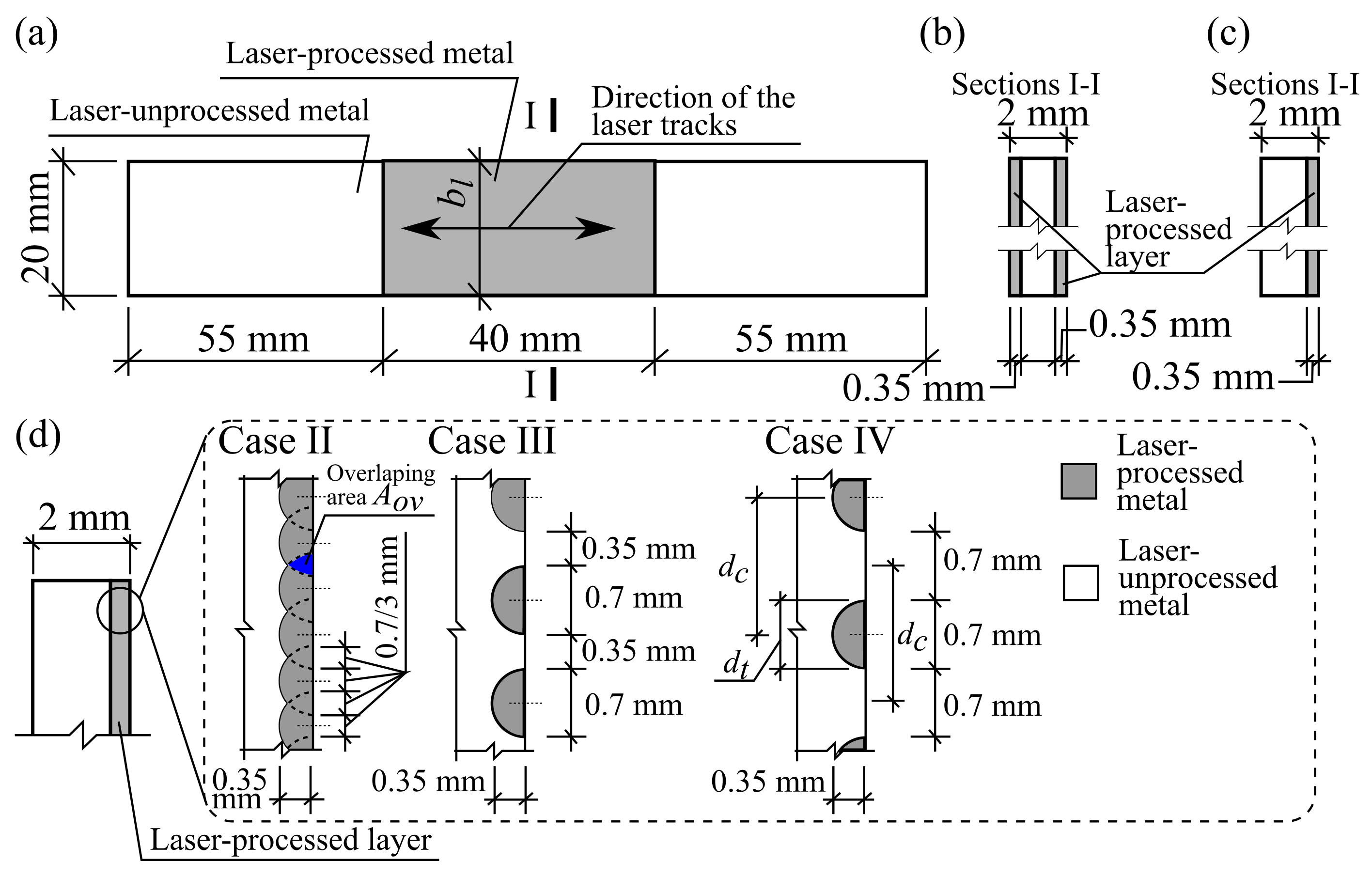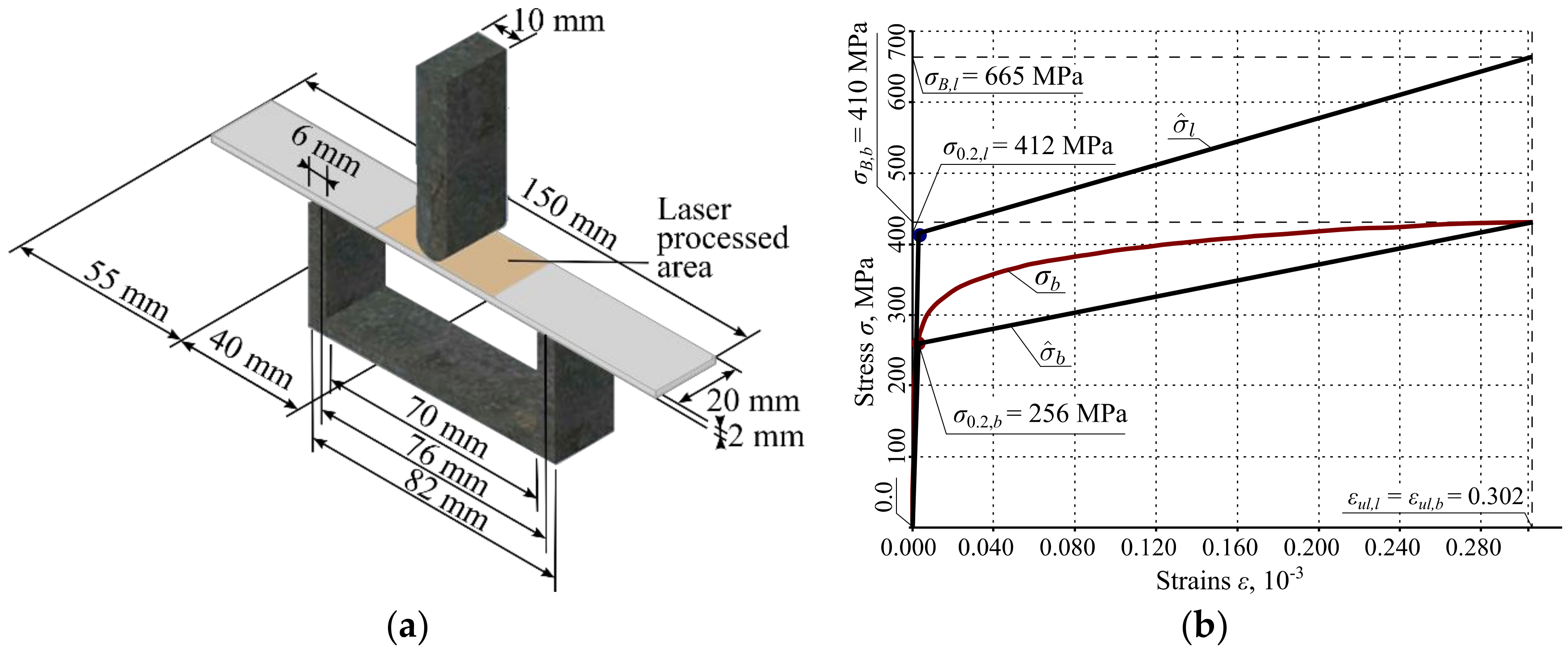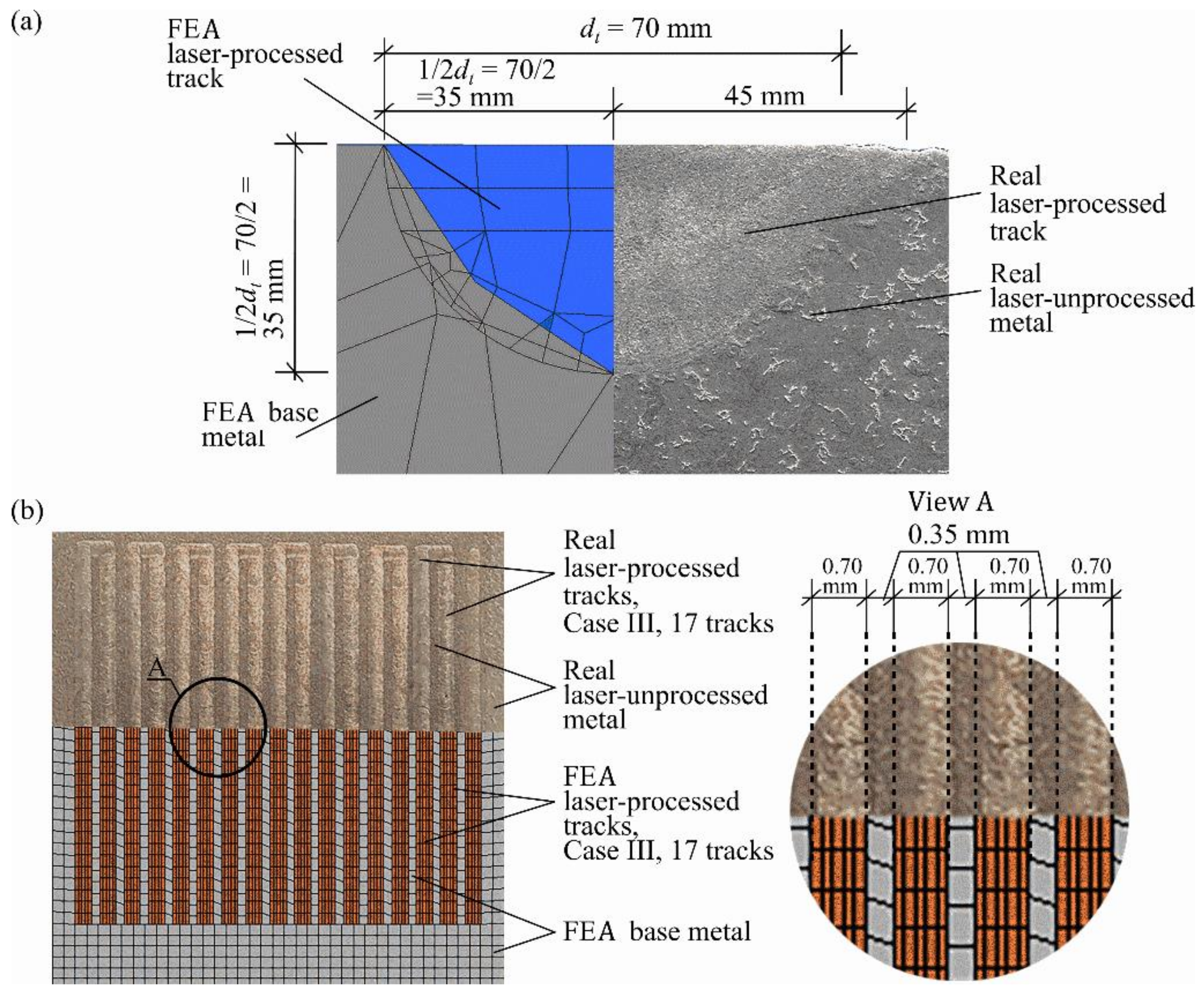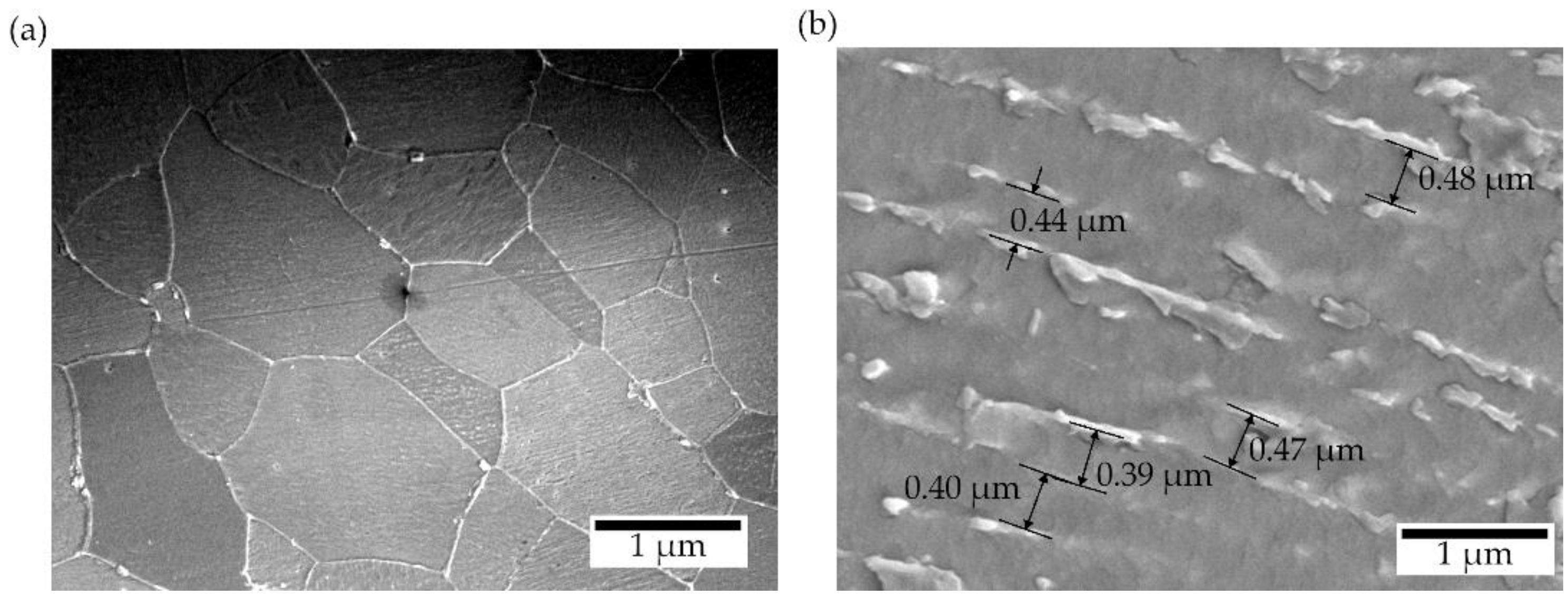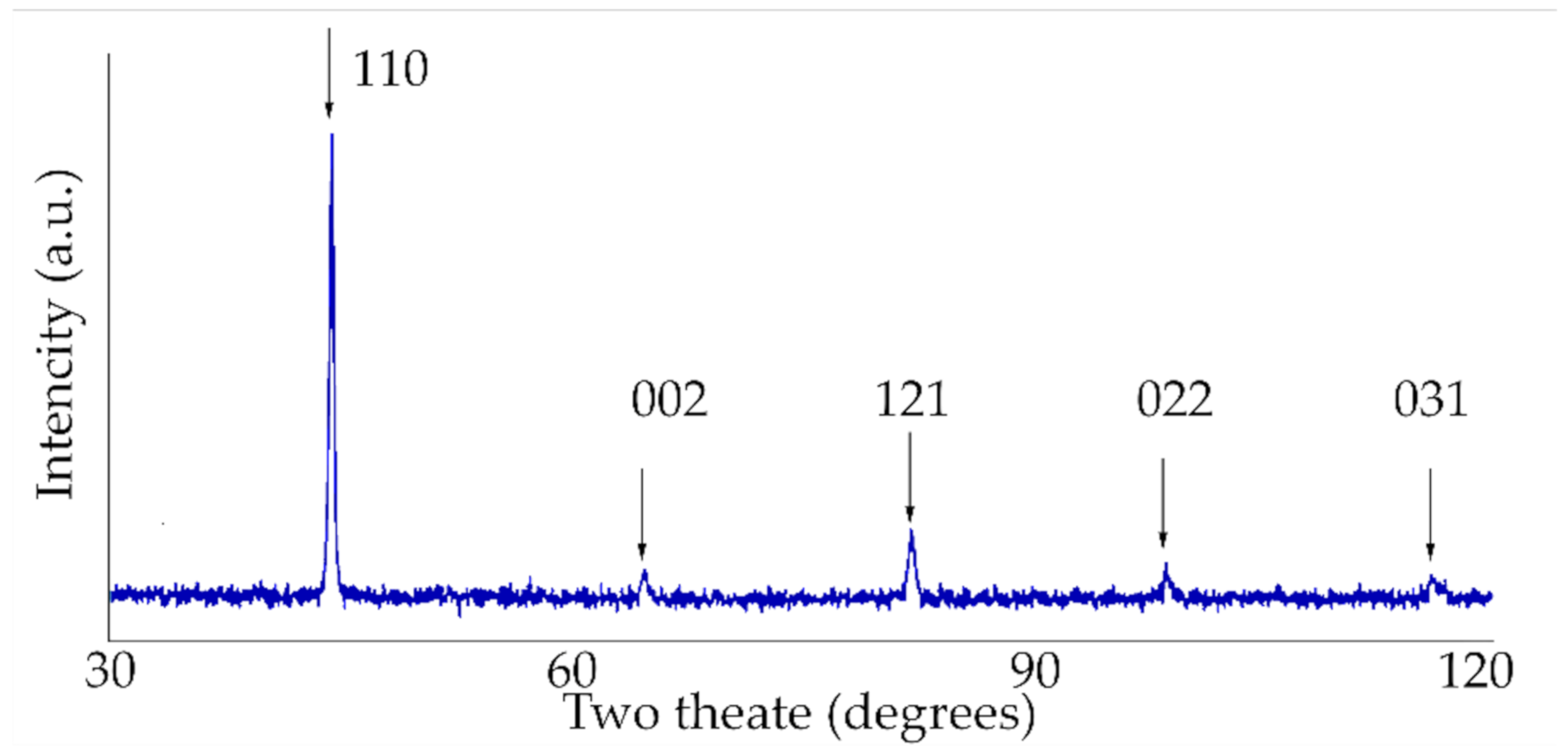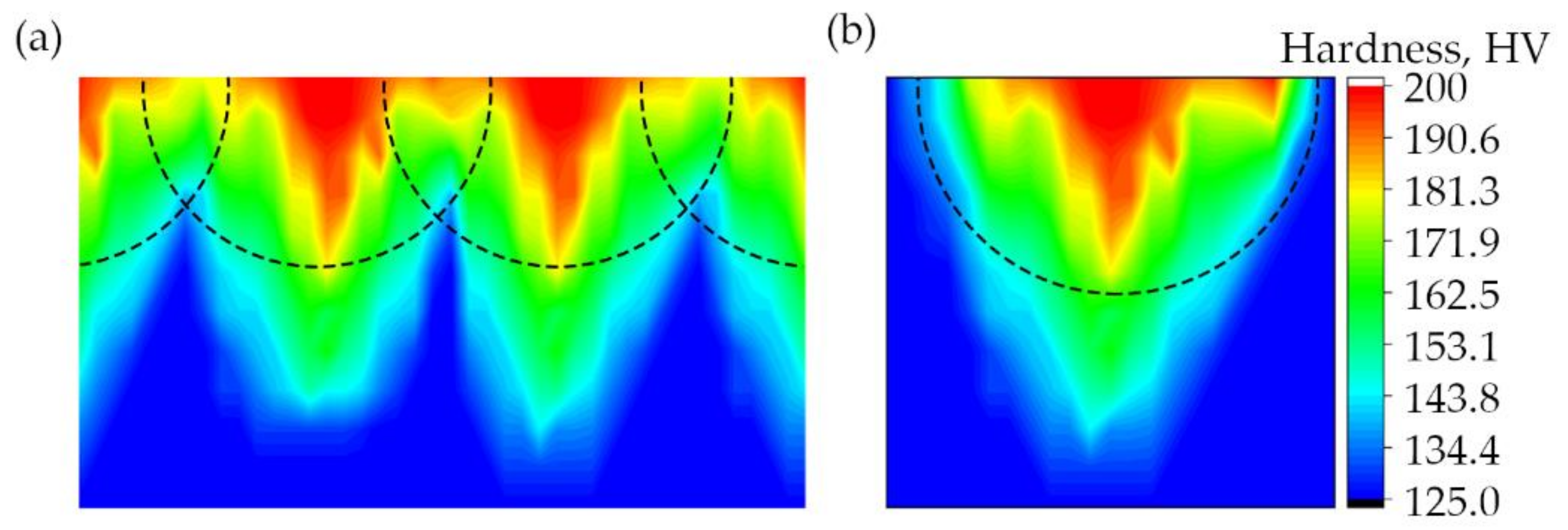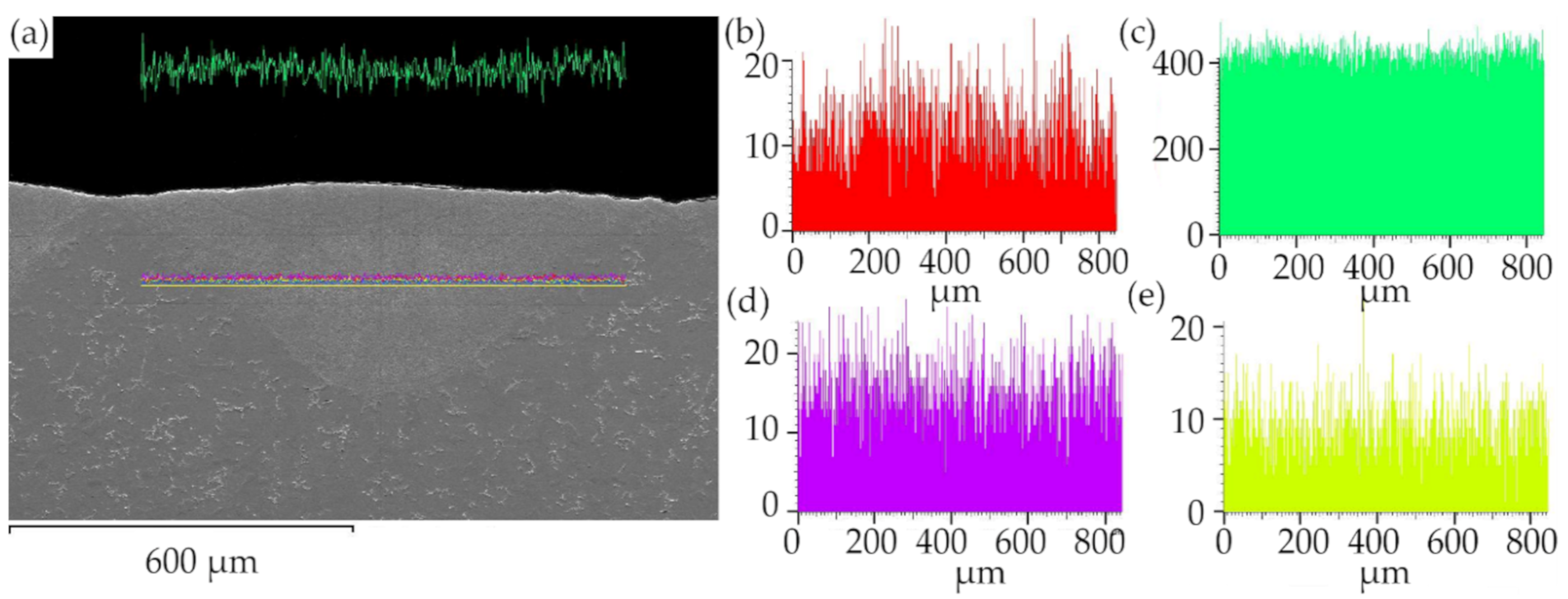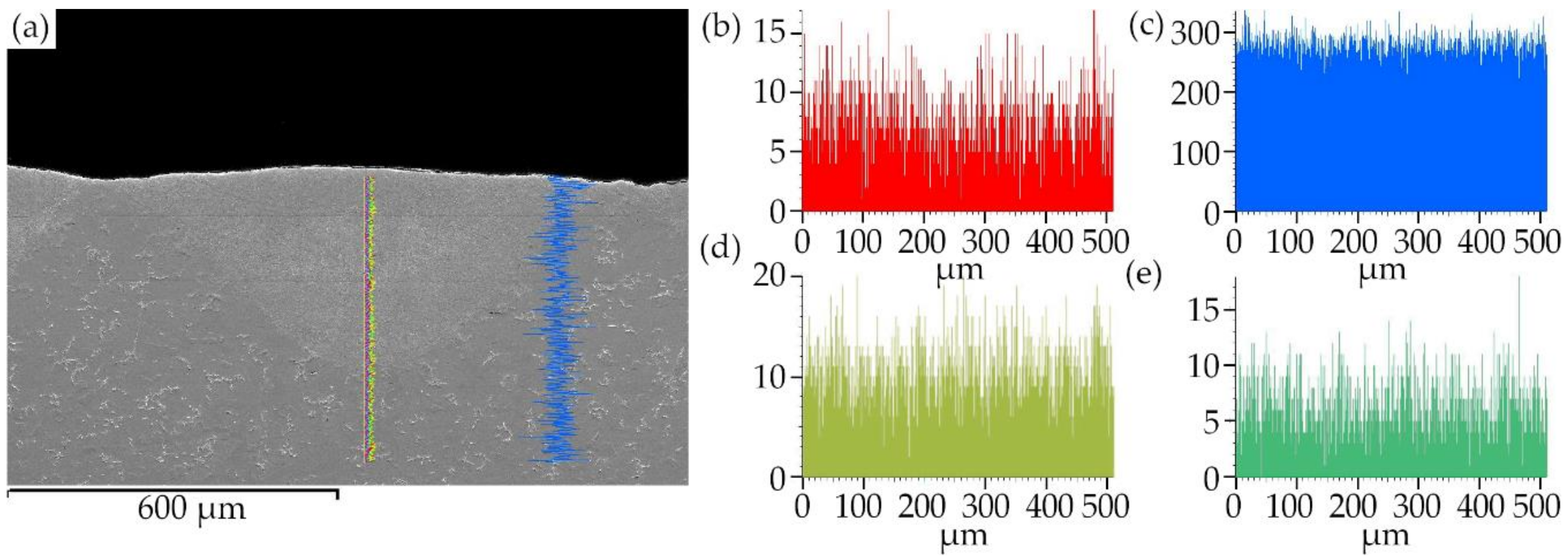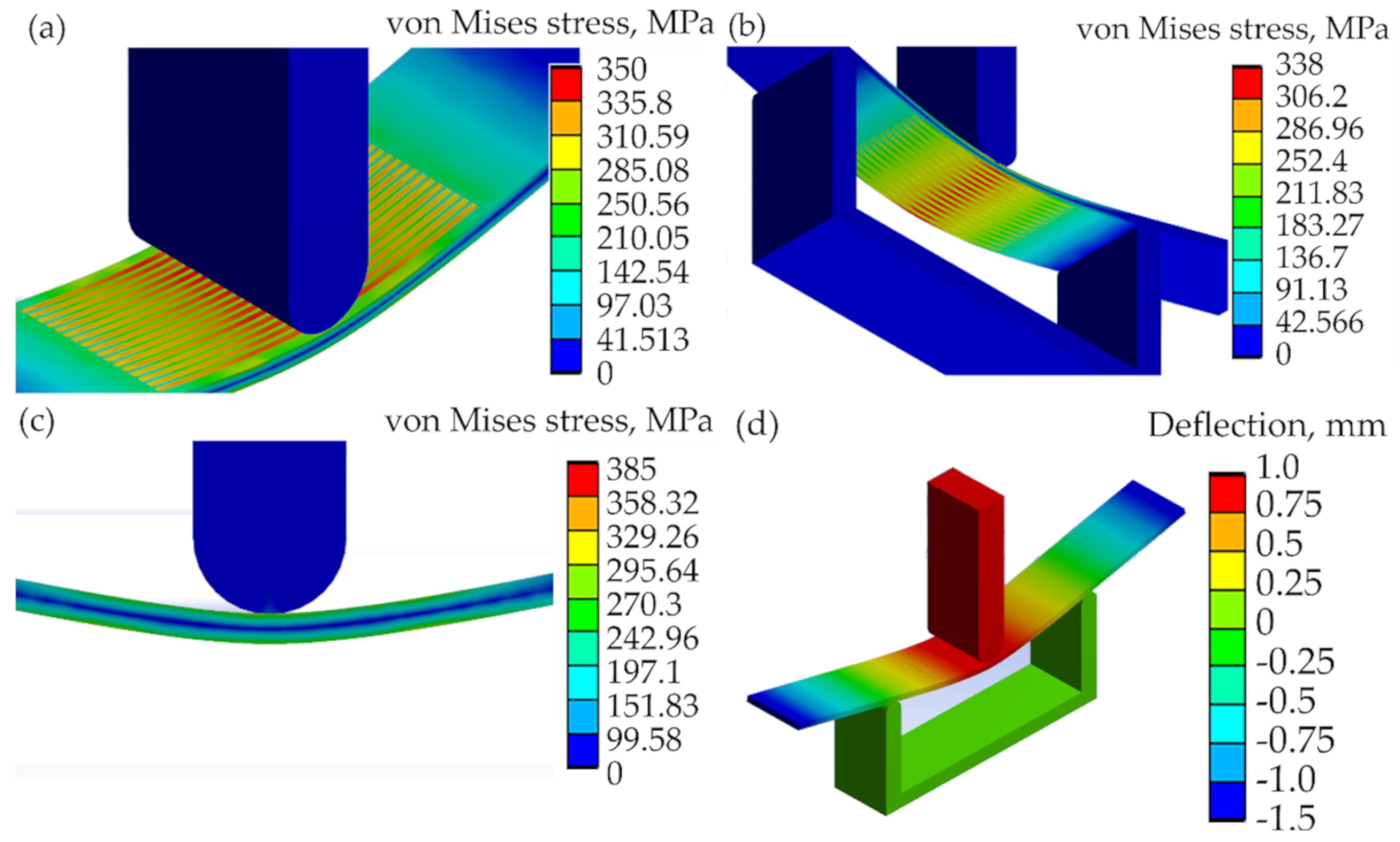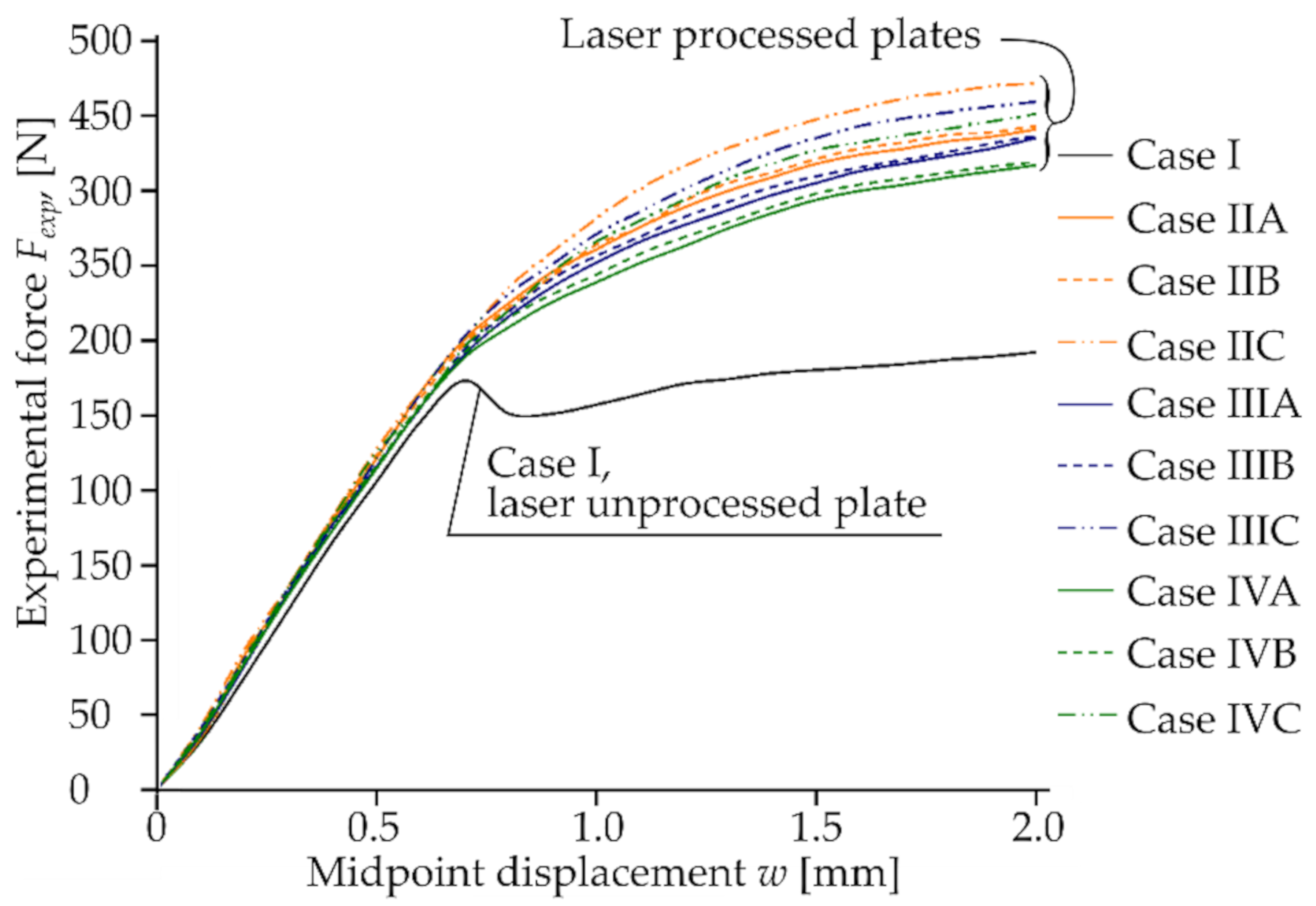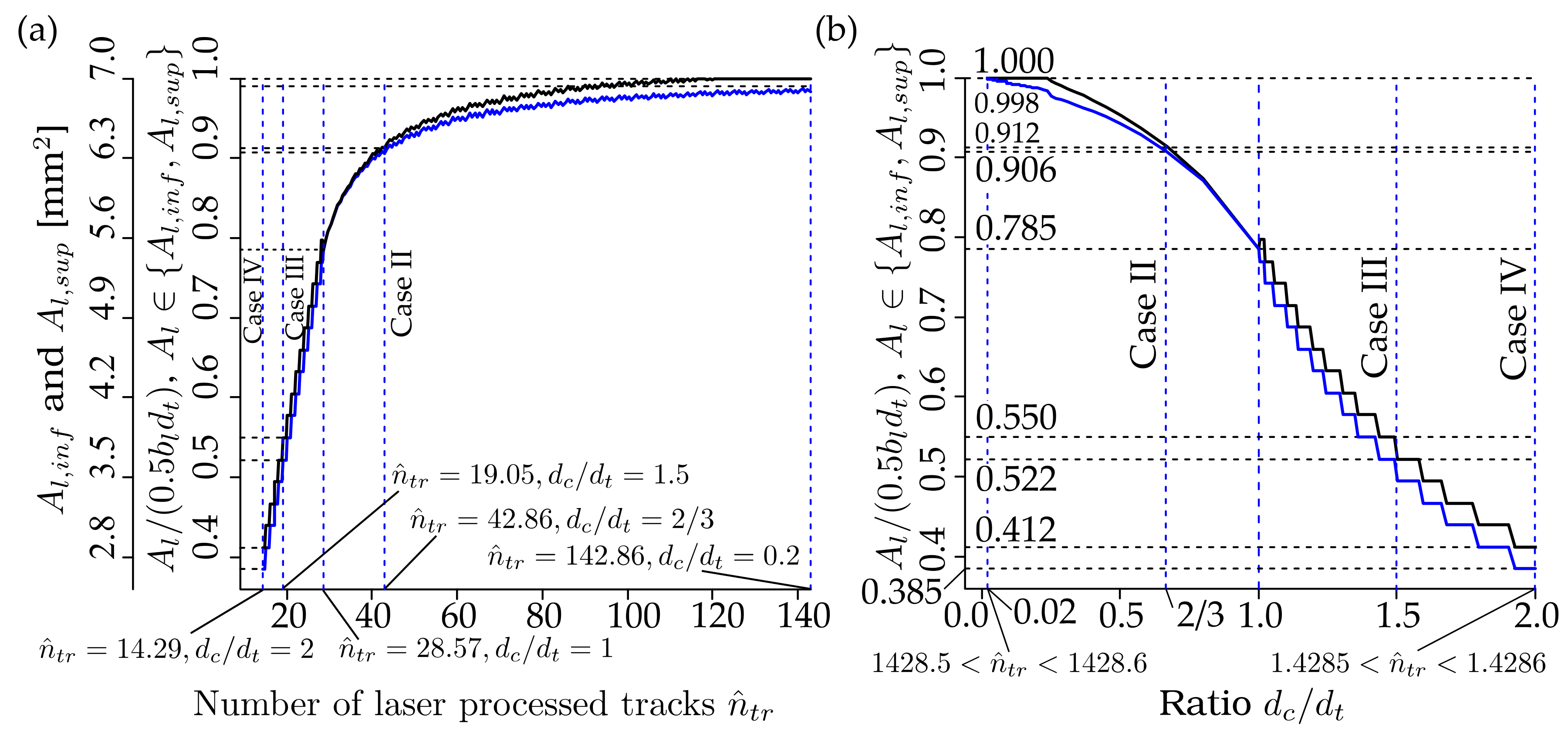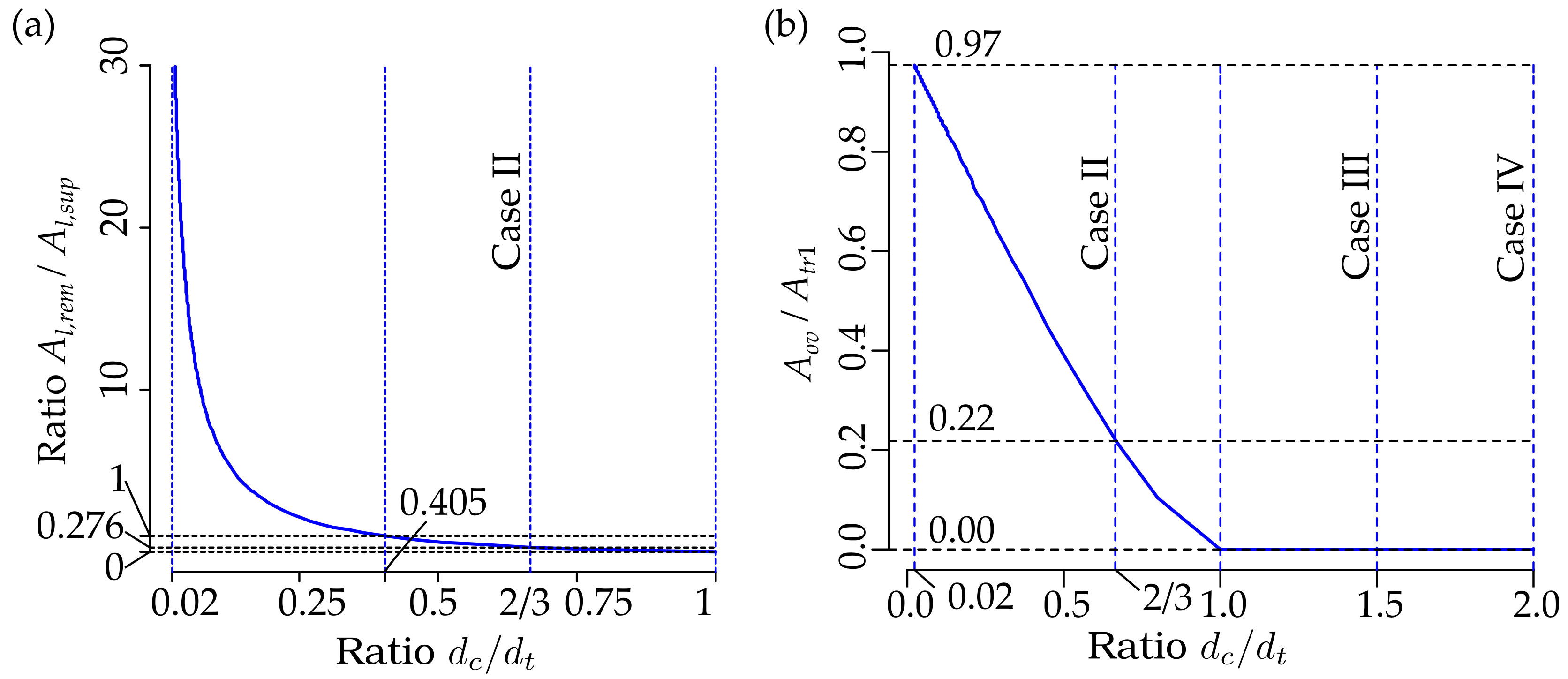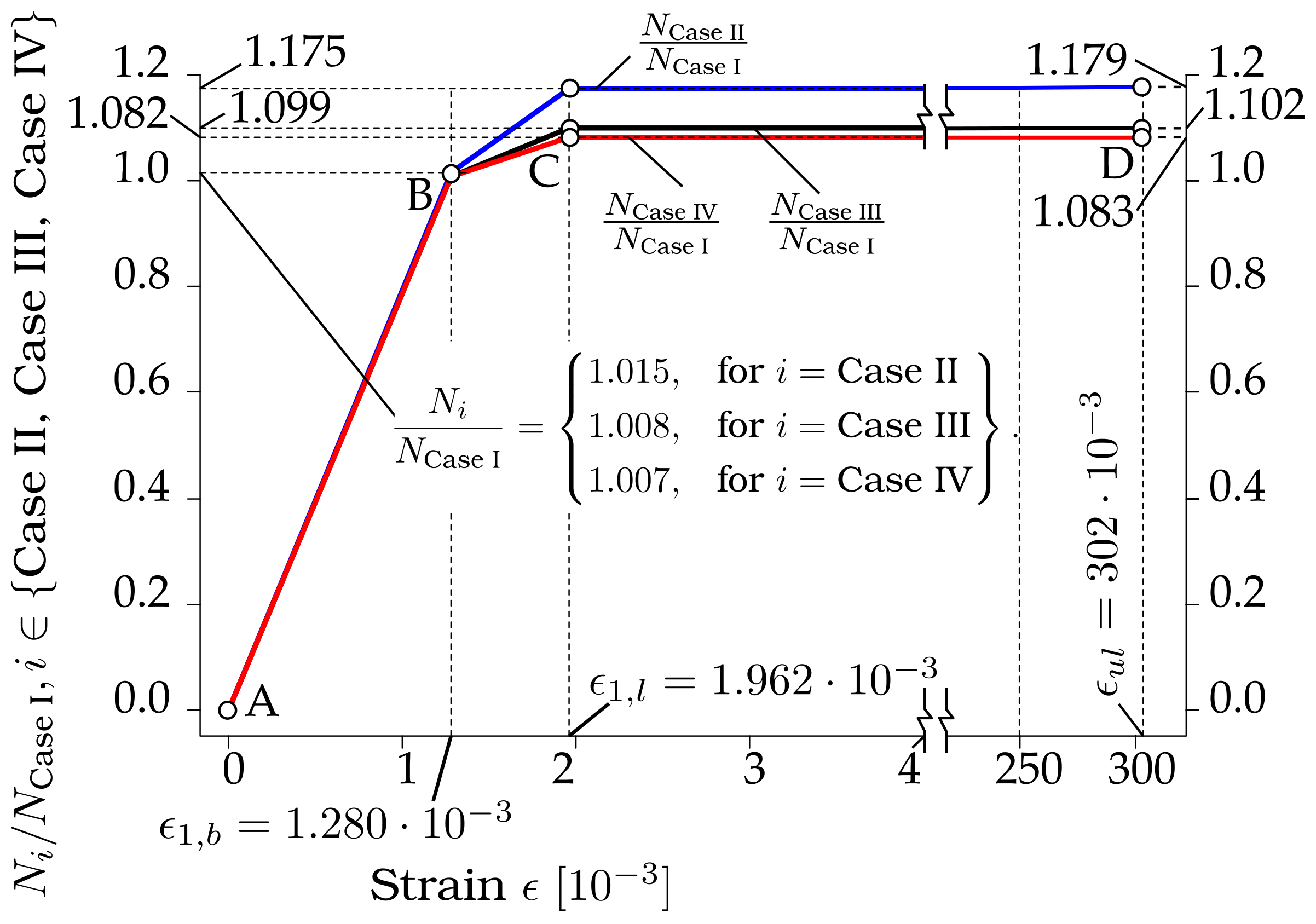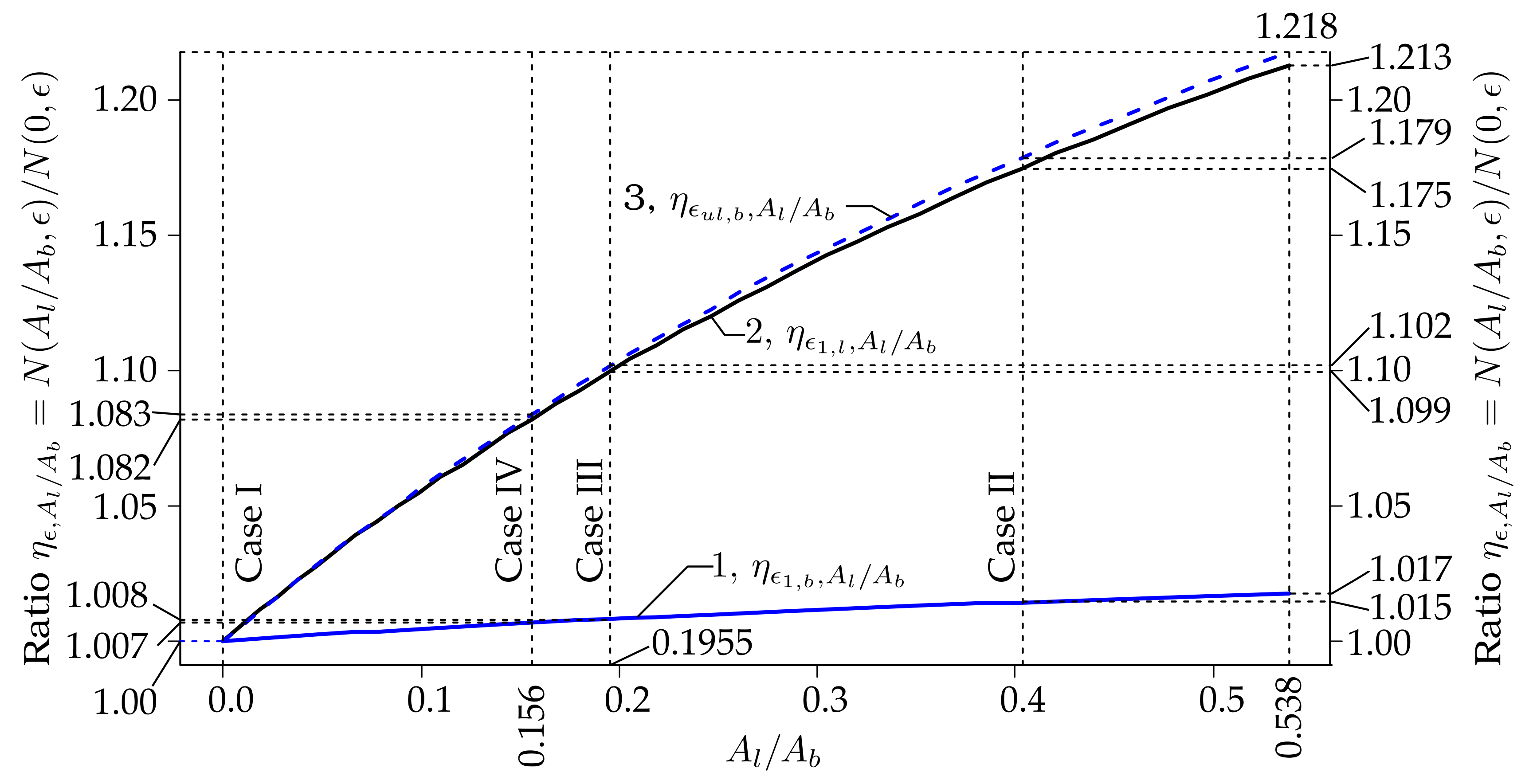The analysis of the results is presented mainly in terms of the relative quantities to make the analysis, discussion and results valid, not only for the particular cases considered in the present article, but also to extend the results and conclusions to other cases.
4.4.1. Area
of the Laser-Processed Metal
Figure 12 shows the dependencies of the bounds of the cross-sectional area of the laser-processed metal,
and
, as well as their ratios
, where
on the estimated number of the laser-processed tracks,
, calculated by Equations (6) or (10), and on the ratio
. The areas
and
were calculated by Equations (4), (5), (7)–(10) of the plate, shown in
Figure 1, when the width of the laser-processed track
mm and the width of the laser-processed area of the plate under consideration,
m. The vertical dotted lines correspond to the minimum and maximum of
or
and laser-processing cases: case II when
; case III when
; and case IV when
; see
Table 5.
Please note: in the present calculations, the numbers of tracks,
, for cases II–IV were evaluated by Equations (6) or (10), i.e.,
was not taken from
Table 5.
As can be seen from
Figure 12,
approaches
with increasing numbers of laser-processed tracks,
, or with a decrease in the ratio,
or
. Also from
Figure 12, it can be seen that the rate of increase of the areas,
, is practically constant with respect to increasing
within the interval
, corresponding to the interval,
, or when
.
More remarkably, the rate of increase of
even increases with respect to decreasing
within the interval
. However, as shown in
Figure 12, the increase in the areas
becomes slower with increasing
or decreasing
or
at
.
Finally, the increase of practically does not change at a very large . It should be noted that the biggest difference and the () occurs at the largest value of ratio , or at the smallest .
Figure 13 shows the dependency of the ratio of the area of the remelted metal to the supremum bound of the area of the laser-processed metal
(
Figure 13a), and the dependency of the ratio of the overlapping area on the cross-sectional area of the single laser-processed track
on the ratio
of the plate under consideration; see
Figure 1, where the total area of the remelted metal is calculated as follows:
.
It is clear that
as
or
. As we can see from
Figure 13a,b, the rate of the increase of the ratio
on
jumps sharply at
, and this rate is almost constant within the interval
, since
on
depends very similarly to the line. However, the dependence of the ratio of the total area of the remelted metal to the supremum bound of the laser-processed metal
increases very slowly at
, but becomes very steep with a higher ratio of
.
The behavior of with respect to differs from due to the influence of the number of laser-processed tracks, . At relatively large , the number is small. Therefore, the contribution of to is also small. With decreasing the number increases and, hence the contribution of increased to increases also.
As we can see from
Figure 13a, the ratio
as
. Therefore
as
, and the difference
or the ratio
increases very quickly with increasing
. It should be noted that the cross-sectional area of the remelted metal,
can be many times, ten- or even twenty-times, bigger than the supremum bound of the cross-sectional area of the laser-processed metal
at small values of
. Throughout this subchapter, a decrease in
corresponds to increasing the number of laser-processed tracks,
and vice versa, while increasing
corresponds to a decrease in
.
The analysis above allows us to conclude that making a laser-processed layer is very inefficient at small values of
or large values of
, since a very large volume of the metal is melted repeatedly. For practical applications, it is reasonable to take the ratio,
. In this case, as we can see from
Figure 12b,
. This means that the increase in the number of laser-processed tracks
or decrease of the distance between the tracks,
or the ratio
can increase the cross-sectional area of the laser-processed metal only up to
. However, as shown above, the cross-section of the remelted metal, or the ratio
, increases very quickly with decreasing
or increasing
. Hence, the efficiency of laser processing decreases very quickly.
For practical applications, the optimal limit of ratio can be 0.405, since at this point and ratios and . Therefore, a further increase in or decrease in can increase the ratios only up to 4%. To increase the cross-sectional area of the laser-processed metal, , it is better to increase the width, and hence the depth, of the laser-processed track than to increase or decrease .
The considerations given above concerning the ratios , , , , and the corresponding cross-section areas , , , , , are also valid for the corresponding ratios of the volumes , , , , and the corresponding volumes , , , , of the laser-processed metal, where stands for the volume of the laser-processed metal and its indexes , , , , , and means the same as the corresponding indexes of the cross-sectional areas denoted by .
Since the above analysis, results, conclusions and recommendations are expressed in relative terms, then these considerations are also valid for other cases of plates, laser-processed areas, their widths , the laser-processed track widths , the distances between the track centers , the number of laser tracks and so on.
4.4.2. Axial Stiffness and Force—Strain Behavior of the Laser-Processed Plate
The dependencies of the ratios of the axial forces of the laser-processed plates (see
Figure 1, cases II, III and IV) to the unprocessed plate, case I:
,
on strain
are shown in
Figure 14. The axial forces
,
were calculated according to Equations (1) and (2), using the properties of the base and laser-processed metals given in
Table 7. The cross-sectional areas of the laser-processed metal of plate
were calculated by the proposed Equations, (3), (7) and (11) when the number of the laser-processed sides
and the number of the laser-processed tracks of one side of the plate, corresponding to cases I, II, III and IV
is given in
Table 5. The following cross-sectional areas were obtained:
for case I,
m
2 for case II,
m
2 for case III,
m
2 for case IV. The cross-sectional areas of the base metal of the plate corresponding to cases I–IV,
, where
m
2 is the cross-sectional area of the plate; see
Figure 1b.
As we can see from
Figure 14, the influence of laser processing is almost infinitesimal when
; see section AB in
Figure 14. The maximum ratio,
. If the axial stiffness of the cross-section of the plate is
, then we can say that laser processing does not have any influence on the axial stiffness of the plate when
. However, the influence of laser processing on the ratio of the axial forces
increases with increasing strain within the interval
and remains constant when
, where hereafter
; see sections BC and CD in
Figure 13.
As shown in
Figure 14, laser processing increases the axial forces
and hence the axial stiffness
,
, about 17.5% for case II, 9.9% for case III, and 8.2% for case IV. For practical structural calculations, it is reasonable to assume that the plate’s bearing capacity corresponds to the axial force
at
, since the increase of the ratio
within the interval
is very low:
for case II;
for case III; and
for case IV.
The dependencies of the ratios of the axial forces
at
with respect to the ratio of the cross-sectional areas of the laser-processed and base metals
of the plate shown in
Figure 1 are shown in
Figure 15. In the situation when
, since
also corresponds to the laser-unprocessed plate, i.e., case I, then
. In these calculations, it was assumed that the cross-sectional area of the laser-processed metal attains values from the interval:
. Since
, where
, then
. Thus,
corresponds to the upper bound of the cross-sectional area of the laser-processed metal when
of the two-side laser-processed plate; see
Figure 1b. Other parameters used to draw
Figure 15 were the same as in
Figure 14; see the explanations given at the beginning of the present subchapter.
As we can see from
Figure 15, the ratios
on
do not change according to the linear law, as in the case of the dependence of the
on
when
is constant, according to Equation (2). This happens since the cross-sectional area of the base metal
, i.e.,
also changes when
changes. Also, it is clearly visible that the ratio
affects the ratios
, especially when
Thus, when
, then the relative difference
, while when
, then
; and when
, then
. When the strain increases from
to
and
, then the relative difference
. From
Figure 15, we can see that the biggest possible increase of the axial force is when
is
.
